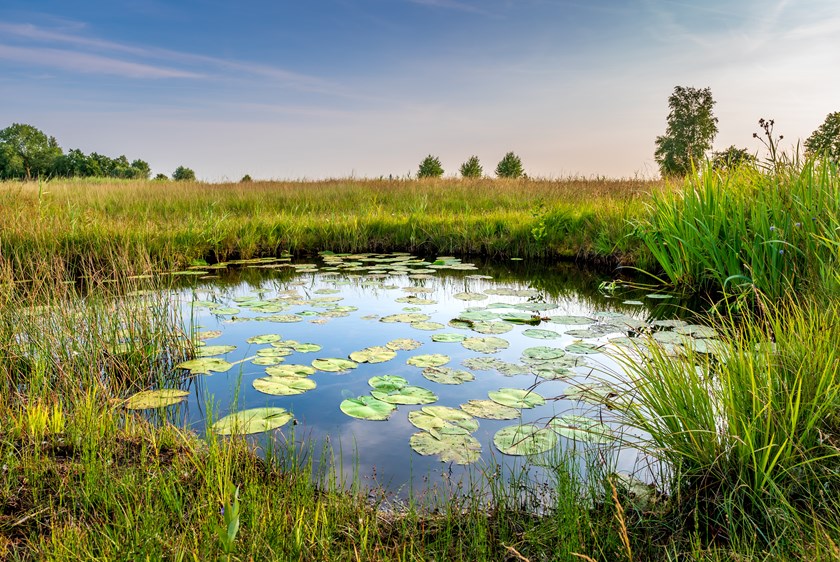BNG overage – how will it work?
Insight

Landowners are familiar with the concept of imposing overage on land sales in order to capture a fraction of the uplift in value arising from planning permission for development. The advent of Biodiversity Net Gain (BNG) and possibly other environmental schemes, means that in future, significant payments may result from committing land to 30 years of environmental creation or enhancement (to enable development elsewhere), rather than actually building on it. It is possible for sellers to impose overage to tap into such payments, but there is a lot to think about.
Familiar concepts
Like any development overage, an “environmental” overage will be for a defined term. It will be triggered by some events and not others, and there will be a calculation mechanism for the amount due. There will also be provisions to ensure that future owners give direct deeds of covenant with the initial seller to ensure the burden of the overage passes to new owners. So far, so familiar, but what are the differences?
Which schemes to capture?
There is an increasingly wide variety of natural capital schemes, from Environmental Land Management (ELMs) to Woodland Carbon Code, from BNG to nutrient neutrality off-setting. In the context of overage, it is helpful to make a distinction between schemes that enable development elsewhere and those that simply generate revenue from environmentally beneficial land use. This reflects the idea that overage is there to capture windfalls from contingent events that give rise to (usually capital) receipts, not merely increased revenues from the judicious and profitable management of land by the current owner (eg ELMs or other financial assistance under the Agriculture Act 2020).
So, which schemes to capture? Drafting widely to capture a variety of (perhaps as yet unknown) schemes presents challenges. Drafting narrowly to capture payments arising from offsite BNG is much easier, as the arrangement will refer to an established statutory framework. However, in doing so, sellers need to keep their eyes open to the fact that other potentially valuable environmental schemes may come forward in the future that will escape a narrow definition. Landowners may be tempted by such alternatives to BNG if they avoid triggering overage.
When and how much?
As with development overage, there needs to be a trigger event. This can be drafted to cover off whichever is the earlier of receipt of a BNG, completion of the relevant documents (section 106 agreement or conservation covenant) or the commencement of environmental works.
Much more so than planning permission for development, a BNG windfall is not all positive. A 30-year environmental commitment to a habitat management plan carries significant management costs, and there may also be a decrease in the capital value of the land bound by the commitments. The buyer of land (as with development overage) will argue that deductions should be made from the uplift to cover such costs and losses. But the negotiation of such a calculation is likely to be difficult. An attractive alternative may be to keep the overage percentages very low (without any deductions) so that it remains attractive to a landowner to do the BNG deal whilst still allowing the beneficiary of the overage to skim off some cream.
As with development overage, it is much easier for the overage to latch onto one-off capital payments. An uplift realised by an income stream presents considerable drafting and enforcement challenges. The principle of rolling up income payments into a capital equivalent or net present value is a drafting possibility, but is unlikely to be attractive to a buyer (who will not have realised a lump sum to pay the overage payment at the outset).
Another bite of the cherry?
Thought needs to be given to the possibility that the overage might be triggered more than once within the lifetime of the overage period. A subsequent trigger might be a replacement BNG scheme after 30 years, but it might also be a further scheme that is stacked on the same site as the initial scheme. Sellers will want to insist on the overage biting repeatedly to capture this value (a “once only” overage risks being exhausted by a low value scheme).
The problem of enforcement
With development overage, a restriction on the register ensures transmission of the money payment obligation to successors in title. However, with a BNG overage arrangement (unlike development overage), the restriction on the register does not act as a guarantee of compliance with the obligations. Restrictions ensure that no development sale can take place without the consent of an overage beneficiary. However, BNG payments will most likely occur without any change of legal ownership, so how will the overage beneficiary know if the overage has been triggered? Ultimately, this may come down to estates having management systems to monitor activities on the sold land and registrations on the BNG register.
It took decades for development overage to settle into an industry standard approach.
The same is likely to be the case with overage for environmental uplift, and we are at square one. However, land sales may come forward of sites with no development potential, but considerable potential as a habitat bank. For the right site, BNG overage should be considered.
This article is part of the Rural Estates Newsletter 2024, click here to read.
This publication is a general summary of the law. It should not replace legal advice tailored to your specific circumstances.
© Farrer & Co LLP, February 2024







